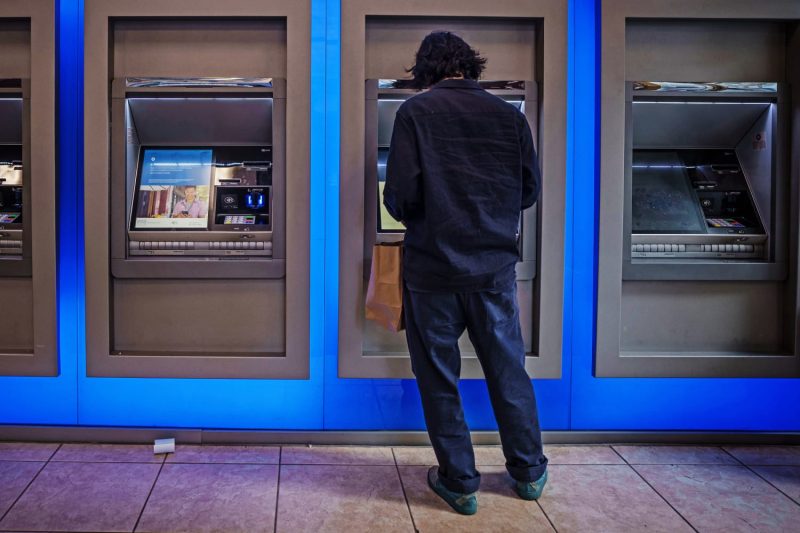February 12, 2024
Despite Big Banks Slashing Overdraft Fees, Customers Still Forked Out $2.2B in 2020
 The banking industry has long been criticized for its high fees and charges, particularly when it comes to overdraft fees. These fees occur when customers spend more money than they have in their account, resulting in a negative balance. In recent years, big banks have made efforts to reduce overdraft fees, but despite their efforts, customers still paid a staggering $2.2 billion in these fees last year.
Overdraft fees have been a contentious issue, with some arguing that they unfairly target low-income individuals who are more likely to struggle with managing their finances. In response to this criticism, many big banks have taken steps to reduce these fees and provide more affordable financial services to their customers. However, despite these efforts, the amount paid in overdraft fees remains alarmingly high.
One of the tactics employed by big banks to reduce overdraft fees is offering overdraft protection programs. These programs allow customers to link their checking account to another account, such as a savings account or a line of credit, to cover any overdrafts. While this can be a helpful feature for customers, it often comes with its own set of fees. In some cases, customers may be charged a flat fee per transaction or a monthly fee for having overdraft protection. These fees can quickly add up, and for many customers, they may still be struggling to make ends meet.
Another strategy that big banks have implemented is lowering the actual cost of overdraft fees. In the past, customers could be charged hefty fees of $35 or more per overdraft occurrence. However, in recent years, many banks have reduced these fees to around $25 or less. While this reduction is certainly a step in the right direction, it does not solve the underlying problem. For customers who are living paycheck to paycheck, even a $25 fee can have a significant impact on their financial situation.
Furthermore, big banks have implemented other measures to try to prevent overdrafts from occurring in the first place. Some banks provide real-time balance alerts or mobile banking apps that allow customers to monitor their account balance more closely. These tools can be helpful in preventing overdrafts, but they are not foolproof. Customers may still find themselves in situations where unexpected expenses or delays in deposits result in a negative balance.
So why do customers continue to pay such high fees despite the efforts of big banks to reduce them? One reason is that many individuals simply are not aware of the options available to them. Financial literacy is a key factor in understanding how to avoid and manage overdraft fees. Without this knowledge, customers may unwittingly fall into the trap of paying unnecessary fees.
Additionally, for some customers, the convenience and ease of using their bank's overdraft services outweigh the cost. In a society where instant gratification is the norm, individuals may prioritize the ability to make a purchase or pay a bill immediately, even if it means paying a fee. This behavior creates a cycle where customers rely on overdraft services, perpetuating the problem of high fees.
In conclusion, while big banks have made efforts to reduce overdraft fees, customers still paid a considerable $2.2 billion in these fees last year. Measures such as offering overdraft protection programs, lowering fees, and providing tools for better financial management have certainly helped. However, more needs to be done to educate customers about their options and provide more affordable financial services. Ultimately, it is crucial for individuals to take control of their finances and actively seek ways to avoid unnecessary fees to improve their financial well-being.
The banking industry has long been criticized for its high fees and charges, particularly when it comes to overdraft fees. These fees occur when customers spend more money than they have in their account, resulting in a negative balance. In recent years, big banks have made efforts to reduce overdraft fees, but despite their efforts, customers still paid a staggering $2.2 billion in these fees last year.
Overdraft fees have been a contentious issue, with some arguing that they unfairly target low-income individuals who are more likely to struggle with managing their finances. In response to this criticism, many big banks have taken steps to reduce these fees and provide more affordable financial services to their customers. However, despite these efforts, the amount paid in overdraft fees remains alarmingly high.
One of the tactics employed by big banks to reduce overdraft fees is offering overdraft protection programs. These programs allow customers to link their checking account to another account, such as a savings account or a line of credit, to cover any overdrafts. While this can be a helpful feature for customers, it often comes with its own set of fees. In some cases, customers may be charged a flat fee per transaction or a monthly fee for having overdraft protection. These fees can quickly add up, and for many customers, they may still be struggling to make ends meet.
Another strategy that big banks have implemented is lowering the actual cost of overdraft fees. In the past, customers could be charged hefty fees of $35 or more per overdraft occurrence. However, in recent years, many banks have reduced these fees to around $25 or less. While this reduction is certainly a step in the right direction, it does not solve the underlying problem. For customers who are living paycheck to paycheck, even a $25 fee can have a significant impact on their financial situation.
Furthermore, big banks have implemented other measures to try to prevent overdrafts from occurring in the first place. Some banks provide real-time balance alerts or mobile banking apps that allow customers to monitor their account balance more closely. These tools can be helpful in preventing overdrafts, but they are not foolproof. Customers may still find themselves in situations where unexpected expenses or delays in deposits result in a negative balance.
So why do customers continue to pay such high fees despite the efforts of big banks to reduce them? One reason is that many individuals simply are not aware of the options available to them. Financial literacy is a key factor in understanding how to avoid and manage overdraft fees. Without this knowledge, customers may unwittingly fall into the trap of paying unnecessary fees.
Additionally, for some customers, the convenience and ease of using their bank's overdraft services outweigh the cost. In a society where instant gratification is the norm, individuals may prioritize the ability to make a purchase or pay a bill immediately, even if it means paying a fee. This behavior creates a cycle where customers rely on overdraft services, perpetuating the problem of high fees.
In conclusion, while big banks have made efforts to reduce overdraft fees, customers still paid a considerable $2.2 billion in these fees last year. Measures such as offering overdraft protection programs, lowering fees, and providing tools for better financial management have certainly helped. However, more needs to be done to educate customers about their options and provide more affordable financial services. Ultimately, it is crucial for individuals to take control of their finances and actively seek ways to avoid unnecessary fees to improve their financial well-being.
If you would like to delve into the world of investment topics , go to our partner project Wall Street Wizardry


